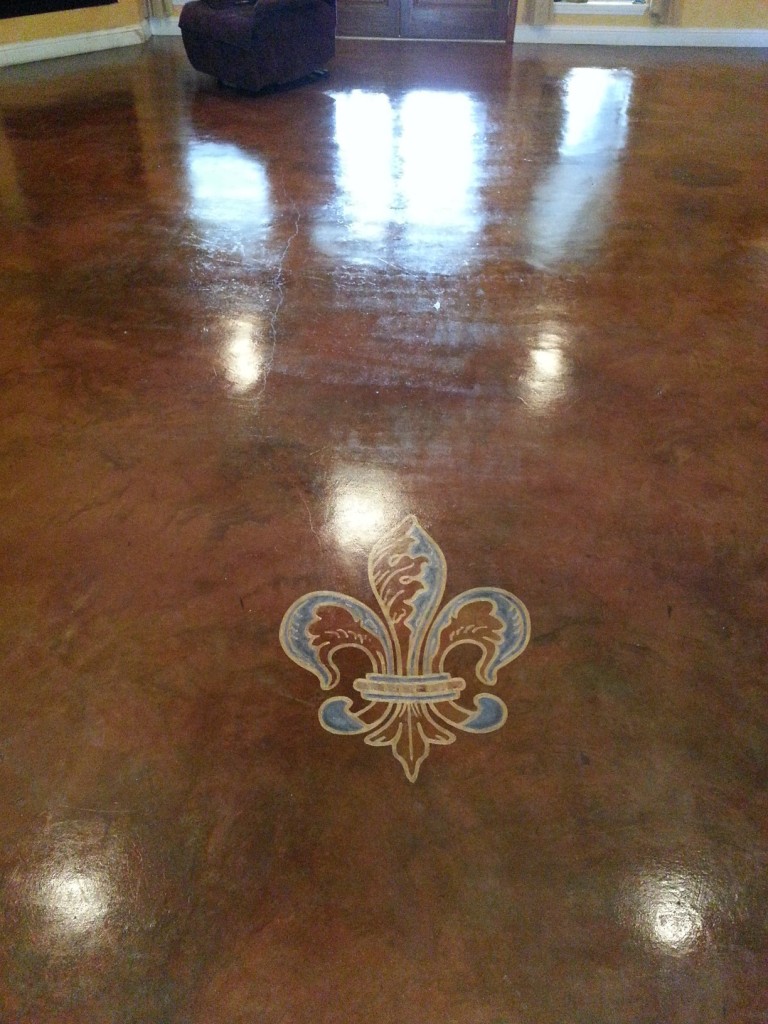- Staining imparts a luxurious richness that cannot be achieved by any other coloring method. Rather than an opaque look such as paint, stains permeate the concrete to infuse it with tones that can look everything from marble, leather, or natural stone look.
- Acid staining is not a dying or pigment-base coloring system, but a chemical reaction. A mixture of water, mineral salts and a slight amount of muriatic acid is applied to the concrete surface. This chemical reaction with the existing minerals (primarily lime) in the concrete over a period of one to four hours creates new earth tone colors on the concrete surface. The concrete surface is later scrubbed to remove excess stain and neutralized by a basic solution of ammonia and water or baking soda (less likely to cause whiting later) to help raise the ph level back to normal level. Due to inconsistencies in the surface level of concrete floor, acid staining creates a variegated or mottled appearance that is unique to each slab. The color penetration ranges from 1/16 to 1/32 of an inch. Older exterior concrete surfaces may not color as well as interior surfaces because the environment has leached or percolated out the mineral content. As well, any exposed aggregate (rocks) in worn concrete will not accept staining. Chemicals commonly used in acid staining include Hydrochloric acid, Iron chloride and Sodium bicarbonate.
- Water Based Stains are similar to acid based stains in the sense that one can still achieve a translucent look like acid; some stains are able to achieve an opaque color and/or a translucent effect. The main difference is that acid stains react to the concrete and change the physical make up of the concrete material, whereas water based stains are more of a “coating” that bonds with the concrete. There are many variations of water based stains that have come into the decorative concrete industry that perform in a number of different ways. Some are polymer based, acrylic and epoxy.
Navigation
Call Us :
417-850-9100
Nothing Short of
Miraculous
Miraculous

